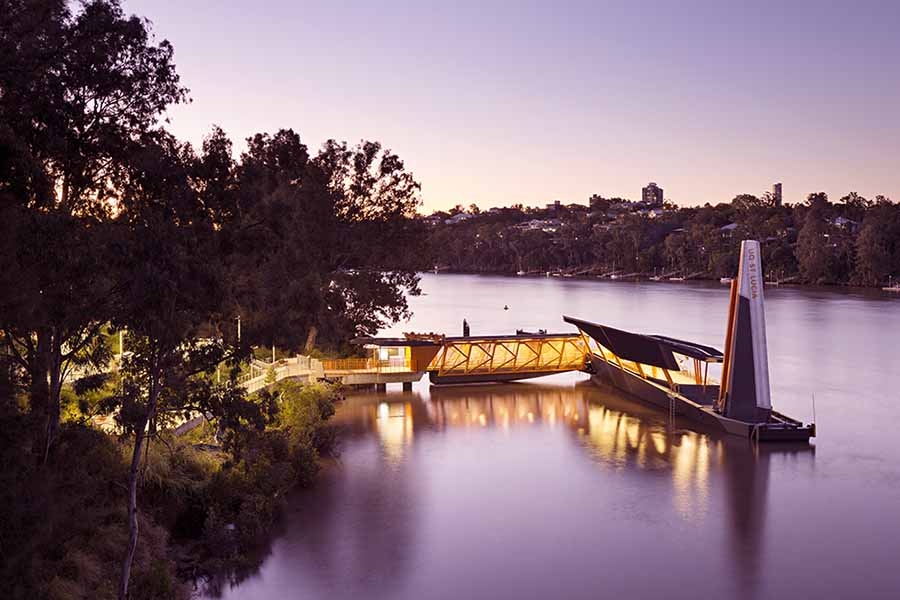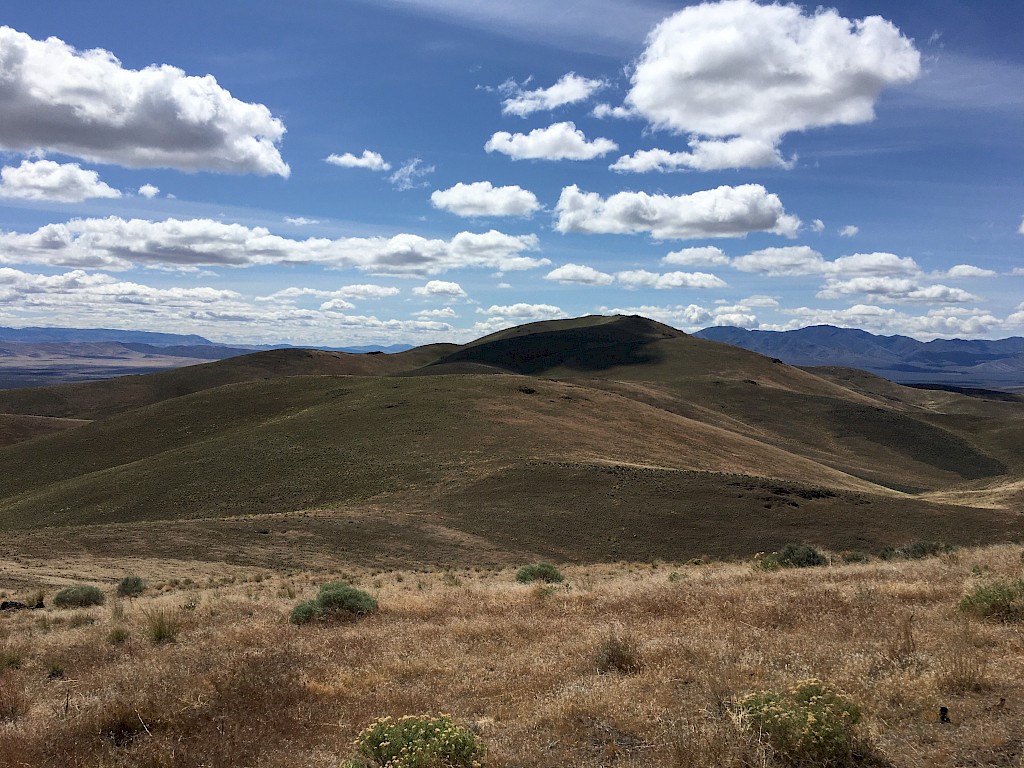A shifting climate drives Australia’s top design award for Aurecon

Brisbane Ferry Terminals Australia
As more severe and volatile weather patterns continue to threaten Australia’s crucial infrastructure, Good Design Australia has awarded its ‘Good Design Award of the Year’* – its highest recognition, to global engineering and infrastructure advisory firm Aurecon and architects Cox Architecture for their revolutionary new design of the Brisbane Ferry Terminals.
The Terminals – which are now flood-proof – were designed with climate in mind and to withstand the ravages of a flood similar to that of 12 January 2011, when the mighty Brisbane River broke its banks, inundating thousands of homes and livelihoods.
“When cyclone Debbie’s violent winds and rain hit Brisbane and Queensland in 2017, roads were cut off and bridges left unusable. Aurecon feared for the safety of its people, while family and friends wondered how their loved ones would make it home. Many related feeling powerless,” says Aurecon’s Global Chief Innovation Officer John McGuire.
The cyclone’s damage to Brisbane’s critical infrastructure was immense at $1.5 billion and extending to GDP – with over $2 billion in economic losses to the state.
“Following an event of this magnitude, it’s critical that those effected are able to get their lives back on track as soon as possible,” says McGuire. “That imperative is what motivated the design of the Terminals following the 2011 floods. We asked ourselves, ‘Could we achieve the impossible? Could we design infrastructure that would hold up proud in the face of unstoppable forces?’”
The Terminal’s bold design concept is a significant shift away from previous design conventions, with respect to aesthetics, flood resilience and accessibility.
To stimulate innovation, Aurecon pulled together 15 different skills across the maritime, industrial, mechanical and architectural disciplines and employed a design thinking methodology heavily focused on the human experience of users and the people of Brisbane.
According to McGuire, they used teams who don’t usually design ferry terminals, let alone collaborate.
“Innovation is not a one-discipline show and tapping into diverse schools of design became key to creating an innovative, world-first solution.
“The key included the whole group understanding the problem. They had to forget ‘safe’ and come up with something that challenged the boundaries of what was possible. The team didn’t just solve the problem…they interrogated it, asking ‘Why?’; ‘Why not?’ and ‘What if?’ across every aspect of their design.”
“The process for coming up with the design was very much a team effort,” said Aurecon Project Director Arne Nilsen.
“We used a lot of paper, a lot of hand sketches. There’s something about the whole process of sketching and thinking. The sketching feeds back on your thoughts and vice versa, and it all comes together,” he said.
The Judges commented that the project is: “An excellent example of a multidisciplinary design collaboration that has resulted in a truly innovative and game-changing project. Every detail has been meticulously designed and engineered with the end user in mind.
“A truly ground-breaking design-innovation with the potential to be adapted and used all over the world.”
Engineers today face multiple, increasingly complex challenges, in addition to designing for increasingly volatile weather patterns associated with climate change. The need for future-proofed infrastructure, such as bespoke public transport accessible to all, the impact of automation, intelligent buildings and new infra-technology to better design, build and manage our infrastructure assets – will all require an extremely high level of innovation
“As engineers design for the future, technology and innovative solutions like this will be imperative to meeting tomorrow’s challenges,” comments McGuire. He goes on to say that in future, the role of the engineer will be to interrogate the impossible; to answer “I think we can!” when others have said it’s impossible. Just imagine if we could design all infrastructure to achieve this? What if bridges, power systems and roads were all resilient?
“Our work needs to go beyond function and incorporate purpose, form and the human experience at every step. This award is a clear indication that Aurecon is doing just that – and the recognition that our approach is working is incredibly satisfying,” comments McGuire.
Background Notes
The technology in the Brisbane Ferry Terminals provides resilience in infrastructure that can be applied to any ferry terminal network and, in particular, to those subject to flooding. The unique flood-resilient design features allow a terminal to be returned to operation shortly after significant flood events. The design ushers in a new generation of terminals, which provide resilience and longevity, even in the face of natural disasters.
During the 2011 floods, the river reached a level which saw the gangway tether points under water, meaning they were vulnerable to floating debris. This contributed to the failure of a number of wharves during the floods. Following the floods, the Queensland Premier declared a disaster, setting up evacuation centres and a major incident room to coordinate a rescue operation.
To protect against the paralysing effect of future floods, Brisbane City Council undertook a significant upgrade programme for the Brisbane Ferry Terminal network. Aurecon and Cox Architecture won an open design competition, which attracted 65 submissions from around the world, to design new ferry terminals that would be resilient to future flood events and accessible to all (including wheelchair and mobility-aid users).
The firms challenged each other throughout the process, not only to solve the technical aspects of Brisbane City Council’s brief, but to push the limits of the possibilities across every single component.
“A key feature of the solution Aurecon designed is the gangways underneath the flotation chamber, which develops buoyancy as the water rises. As you get to a certain water level ‒ well above the normal high tide operating level ‒ where the abutment is running with about 600 or 700 mm deep water, so no one’s going to be using it, then it releases at the shore end. This enables the gangway to swing behind the pontoon and avoid being hit by debris,” explains Arne Nilsen, Aurecon’s Technical Director, Brisbane Energy and Resources.
About the Brisbane Ferry Terminals:
Links to project info on Aurecon’s website:
- http://www.aurecongroup.com/en/projects/transport/brisbane-ferry-terminals.aspx
- http://www.aurecongroup.com/en/about/sustainability-aurecon/sustainability-stories/brisbane-ferry-terminals.aspx
- http://www.aurecongroup.com/en/about/latest-news/2015/january/world-first-flood-resilient-terminal-opens-in-brisbane.aspx
*The Terminals also won Good Design Award Best Overall for Product Design 2017 and Good Design Award Best in Category for Product Design, Commercial and Industrial.
About Aurecon
Aurecon is a global engineering and infrastructure advisory company which brings ideas to life to design a better future. Imagining what is possible, we turn problems into solutions.
We provide advisory, design, delivery and asset management services on projects across a range of markets, in locations worldwide.
Understanding the value of expertise, we mobilise our global pool of talent to understand and solve the critical and complex problems you face. We seek to unravel complexity, create clarity and invent new value for you.
We use our thinking to provide innovative solutions.
We bring ideas to life by partnering with you and using our innovation and expertise, with technology, to solve your complex problems.
Please visit www.aurecongroup.com for further information.
More News
Freeport-McMoRan CEO flags concern over global growth amid US tariffs
Freeport CEO Kathleen Quirk says the recent copper price drop was not good long-term for the industry, which depends on multi-billion dollar investments.
April 07, 2025 | 03:27 pm
Kinross buys 9.9% stake in Nevada-focused Eminent Gold
Eminent Gold currently has three gold exploration projects in Nevada.
April 07, 2025 | 03:21 pm
PDAC JV video: New Zealand aims to fast-track mining
New processes are to help the island nation develop its gold, coal and rare earth minerals while respecting Indigenous rights, says resources minister.
April 07, 2025 | 02:55 pm
{{ commodity.name }}
{{ post.title }}
{{ post.excerpt }}
{{ post.date }}




Comments